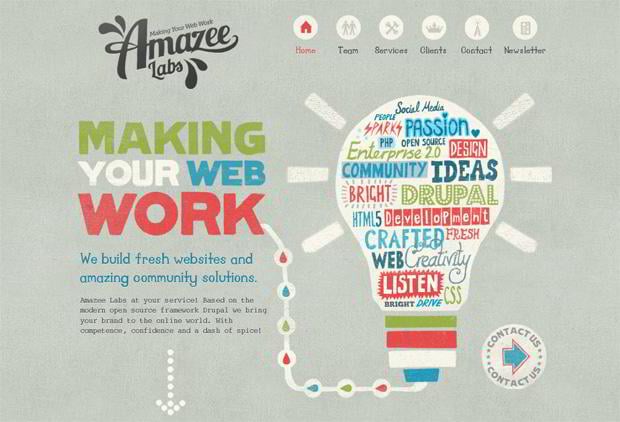Site Design: A Trip With Time.From Modest Starts To Modern Marvels, Internet Site Design Has Actually Undergone A Substantial Makeover Throughout The Years
Site Design: A Trip With Time.From Modest Starts To Modern Marvels, Internet Site Design Has Actually Undergone A Substantial Makeover Throughout The Years
Blog Article
Content Writer-Abel Singer
In the past, internet sites were straightforward and concentrated on info. Navigation was direct, and design was for desktops. Currently, customer experience is key. Information overviews styles for easy navigating. https://kameronojcxq.blogsidea.com/36113326/unlock-the-tricks-of-social-network-marketing-approaches-for-success match various tools. Today, dark setting decreases stress, and minimalist menus improve navigating. Interactive functions involve users, and strong visuals stick out. AI assimilation enhances involvement. See how layout has actually developed to enhance your on the internet journey.
Very Early Days of Website Design
In the very early days of web design, simplicity reigned supreme. Internet sites were basic, with limited shades, fonts, and designs. https://user-generated-content-ma28405.azzablog.com/29998453/becoming-proficient-in-social-media-marketing-recommendations-and-approaches-for-achieving-success got on providing info instead of flashy visuals. https://www.cpapracticeadvisor.com/firm-management/article/21265350/how-accounting-firms-can-target-a-niche-using-seo accessed the web with slow dial-up connections, so speed and performance were essential.
Navigation menus were straightforward, typically situated at the top or side of the page. Internet sites were designed for desktop, as mobile browsing wasn't yet common. Content was king, and designers prioritized easy readability over intricate design components.
HTML was the primary coding language used, and developers had to work within its restrictions. Computer animations and interactive attributes were very little compared to today's criteria. Sites were fixed, with little dynamic web content or customized individual experiences.
Increase of User-Focused Design
With the development of internet site layout, a change in the direction of user-focused design principles has actually become significantly popular. Today, developing websites that prioritize customer experience is vital for engaging visitors and attaining business objectives. User-focused layout involves recognizing the demands, preferences, and habits of your target audience to tailor the web site's layout, content, and features accordingly.
Designers currently conduct thorough study, such as user surveys and use testing, to collect insights and feedback straight from customers. This data-driven approach assists in producing intuitive navigation, clear calls-to-action, and visually enticing user interfaces that reverberate with visitors. By positioning the user at the center of the design procedure, internet sites can provide a much more tailored and satisfying experience.
Responsive design has likewise become a vital facet of user-focused design, ensuring that web sites are enhanced for various devices and display dimensions. This flexibility enhances access and functionality, satisfying the diverse ways users engage with sites today. Essentially, the rise of user-focused design indicates a shift towards producing digital experiences that focus on the demands and assumptions of the end user.
Modern Trends in Website Design
Discover the most recent patterns forming website design today. One famous fad is dark mode style, supplying a sleek and modern-day appearance while lowering eye pressure in low-light environments. Another key pattern is minimalist navigating, streamlining menus and improving user experience by concentrating on essential elements. Incorporating micro-interactions, such as animated switches or scrolling effects, can create a much more engaging and interactive internet site. Responsive design stays vital, making certain seamless user experiences throughout various tools. Furthermore, utilizing vibrant typography and unbalanced formats can include visual passion and draw attention to specific web content.
Incorporating AI technology, like chatbots for client assistance or tailored recommendations, enhances user interaction and enhances procedures. Access has likewise come to be a considerable fad, with designers prioritizing comprehensive design techniques to cater to diverse individual requirements. Embracing sustainability by optimizing website efficiency for speed and effectiveness is an additional emerging pattern in website design. Teaming up with user responses and data analytics to repeat and improve layout constantly is vital for staying pertinent in the ever-evolving digital landscape. By embracing these modern trends, you can create an aesthetically attractive, easy to use website that resonates with your audience.
Conclusion
As you reflect on the advancement of internet site style from the early days to currently, you can see just how user-focused style has ended up being the driving pressure behind contemporary trends.
Accept the journey of adjustment and adaptation in web design, constantly keeping the user experience at the leading edge.
Keep present with the most recent fads and technologies, and never ever quit progressing your strategy to produce aesthetically spectacular and easy to use internet sites.
Advance, adjust, and produce - the future of web design remains in your hands.
